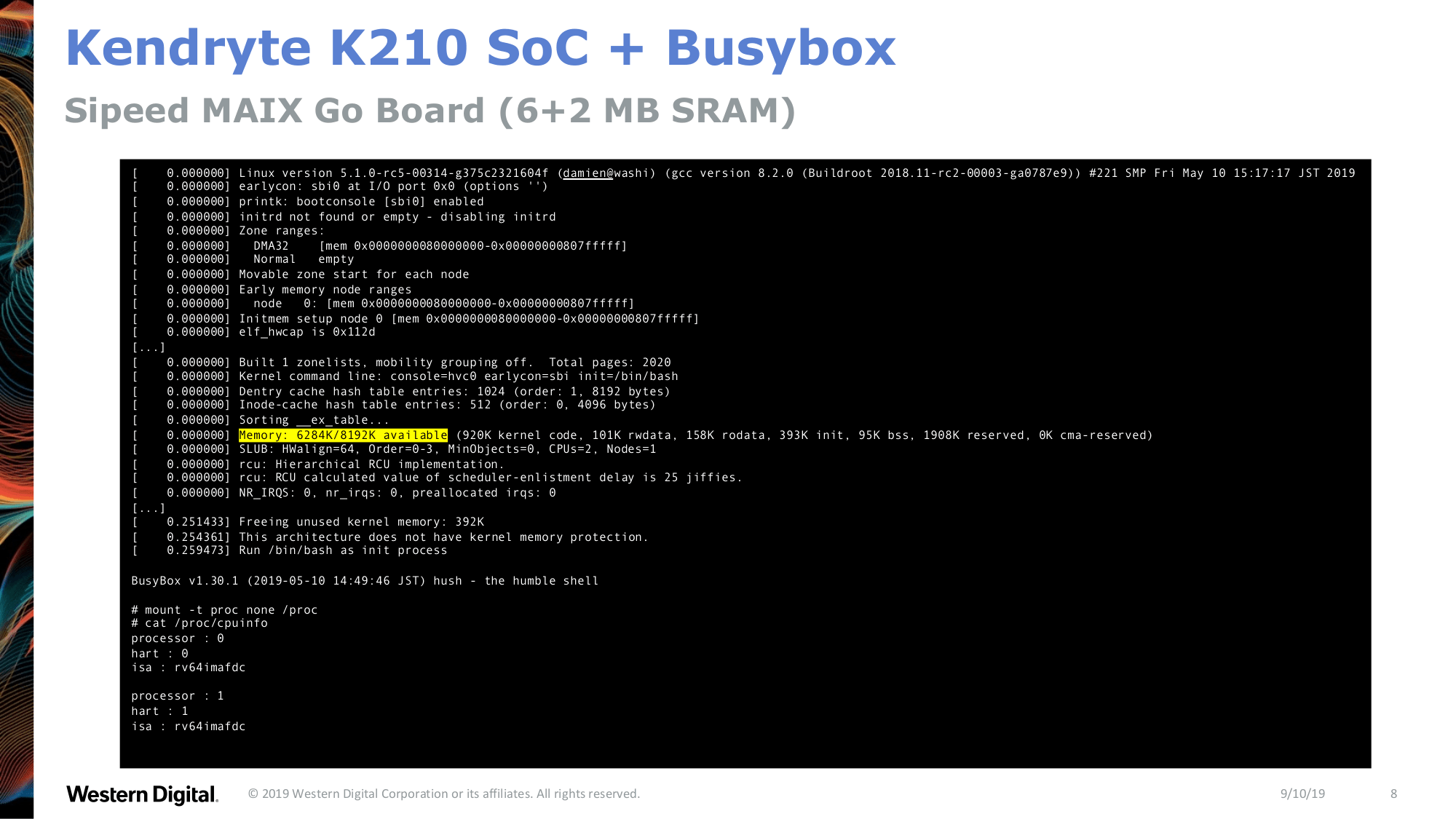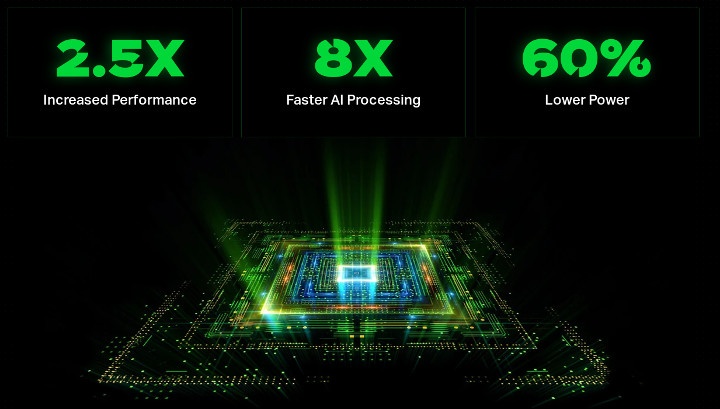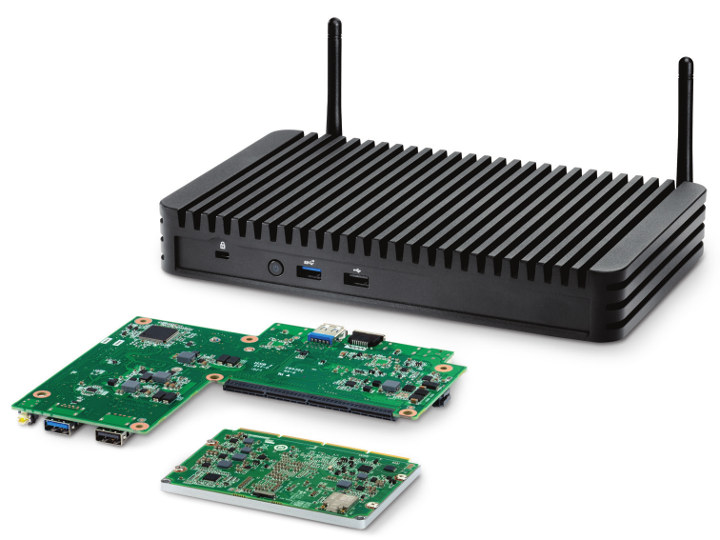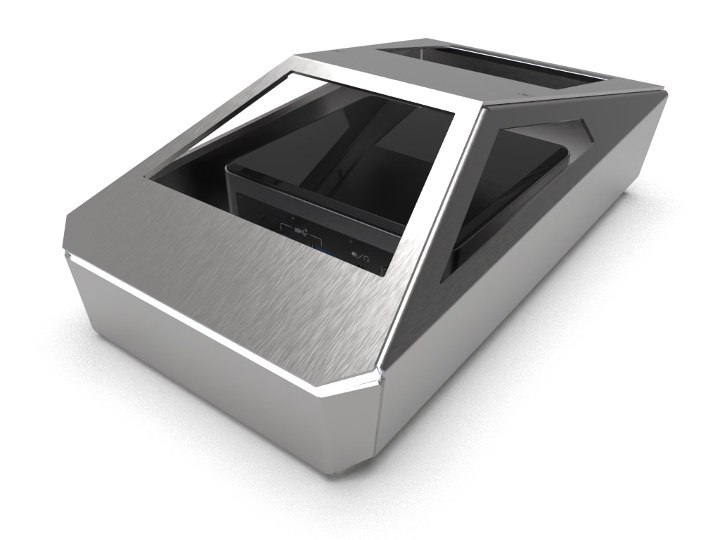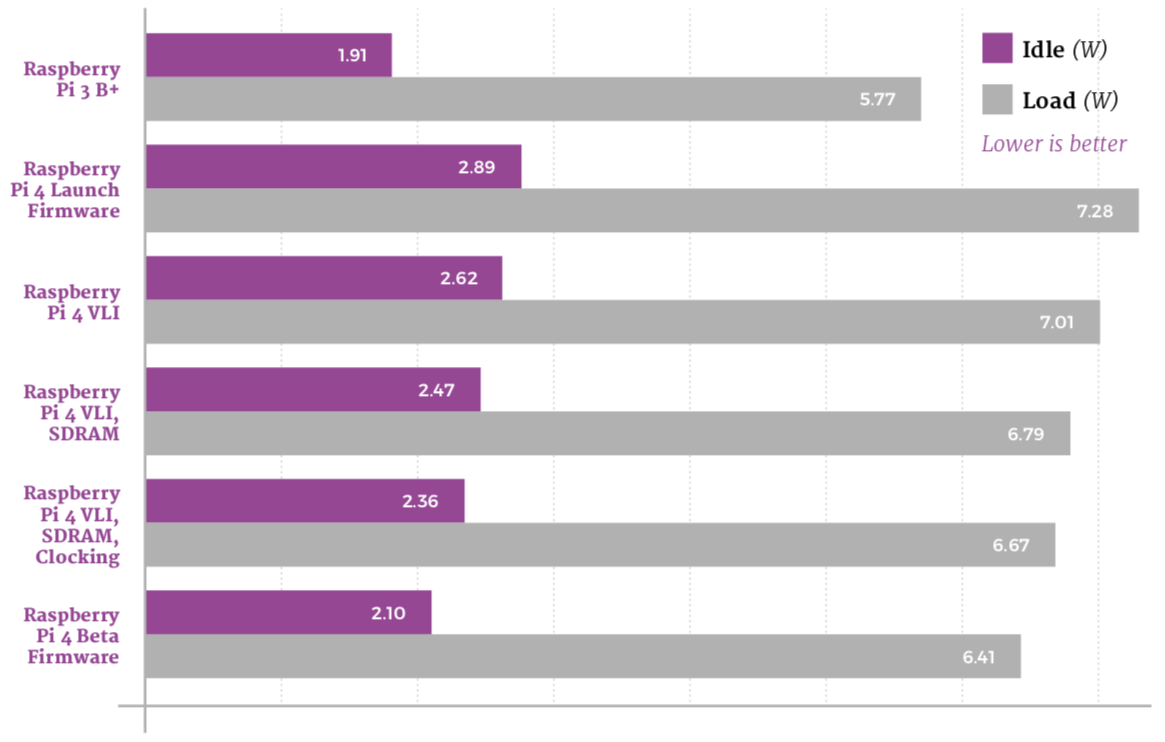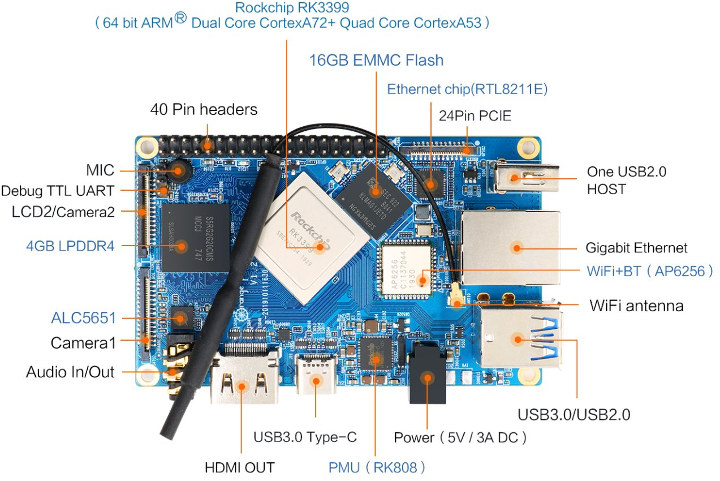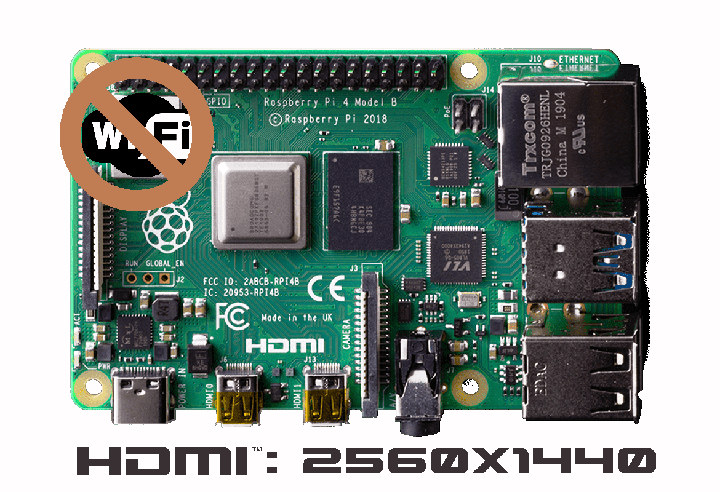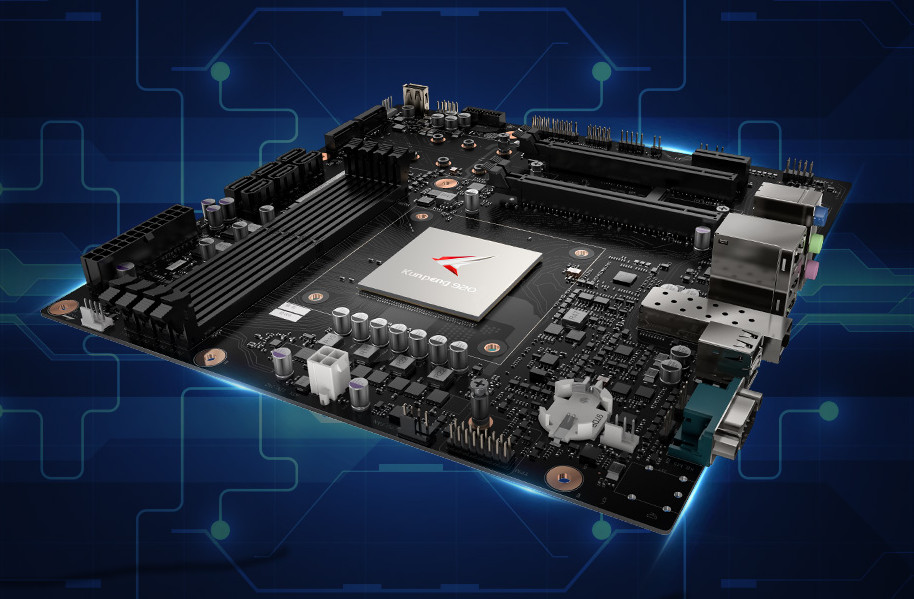The other day we wrote about Getting Started with Embedded Linux on RISC-V in QEMU emulator and noted that Linux capable RISC-V hardware is currently fairly expensive. We also mentioned there was work on porting uCLinux to Kendryte K210 RISC-V processor on boards such as Sipeed Maix board. The processor only comes with 8MB RAM, and does not feature an MMU (Memory Management Unit) so what you’d be able to do on the board would be limited, and for instance, a desktop environment is clearly impossible on the platform. NOMMU support also requires some extra work, and in Linux 5.4 we saw only of the changes was “SiFive PLIC IRQ chip modifications, in preparation for M-mode Linux”. The slide above is extracted from the “RISC-V NOMMU and M-Mode Linux” presentation by Damien Le Moal, Western Digital at the Linux Plumbers Conference 2019 last September. It explains M-mode support is better […]
Imagination Unveils IMG A-Series GPU Designed For Everything from IoT to Mobile and Server
Imagination Technologies has just launched IMG A-Series GPU which they claim is “The GPU of Everything” and “The fastest GPU IP ever”. IMG A-Series can be customized and scaled for various applications & markets from automotive, AIoT, set-top box, mobile, and server. Compared to the company’s earlier PowerVR 9Series GPU, IMG A-Series GPU delivers 2.5 times more performance, eight times faster AI processor, and 60% less power while running complex content with the same process node, area, and under similar conditions. IMG A-Series GPU supports the latest API standards including OpenGL ES, Vulkan, OpenCL, and Imagination provides a Unified AI API for use in combination with PowerVR neural network accelerators. It also offers 5x performance density compared to the best current shipping PowerVR devices and supports PVRIC4 lossless or virtually-lossless compression guaranteeing a 50% bandwidth and footprint reduction. The new GPU also leverages HyperLane Technology with up to eight individual, […]
Intel Austin Beach is a Modular, Fanless NUC Powered by Intel NUC Compute Elements
Unveiled last May, Intel NUC Compute Element is a family of cards that should cost less than the failed Computer Cards, and easy to handle than your typical computer-on-module. The first Compute Elements showcased at Computex 2019 were powered by a 15-Watt Core U-series processor, and now various models will find their way into Intel Austin Beach fanless NUC with “Chandler Bay” NUC Compute Elements powered by Whiskey Lake processors. Intel Austin Beach specifications: Chandler Bay Compute Element (one or the other, all 15-W Whiskey Lake) BKCM8CCB4R – Intel Celeron 4305U 2-core/2-thread processor with 4GB LPDDR3, 64GB eMMC storage BKCM8PCB4R – Intel Pentium Gold 5405U 2-core/4-thread processor with 4GB LPDDR3, 64GB eMMC storage BKCM8i3CB4N – Intel Core i3-8145U 2-core/4-thread processor with 4GB LPDDR3 BKCM8i5CB8N – Intel Core i5-8265U 4-core/8-thread processor with 8GB LPDDR3 BKCM8v5CB8N – Intel Core i5-8365U 4-core/8-thread vPro processor with 8GB LPDDR3 BKCM8i7CB8N – Intel Core i7-8565U 4-core/8 […]
Somebody made a Tesla Cybertruck Case for Intel NUCs
Let’s start the week on a light note… So last week, Tesla announced the Cybertruck, the first electric SUV from the company, and to be honest, at first I had to check whether I was reading the Onion or Babylon Bee because of the unconventional design of the chassis. But it’s real. Mass production is expected for the end of 2020, beginning of 2021, but you can have a miniature version (sort of) much earlier, as MyElectronics designed the CyberNUC, a stainless steel case for all 4″x4″ NUCs that closely follows the shape of the Cybertruck. We even have some specs for the CyberNUC: Compatible with NUC 5, 6, 7, 8, 9 and 10 families Stainless steel body Two screws to fit your NUC in the case Weight – 1 Kg Dimensions – L 266 x W 149 x H 88 mm You might ask: “but why?”. And indeed it […]
Run Raspberry Pi 4 Cooler with a New Firmware & One Easy Trick
Raspberry Pi 4 launched last June with a lot of buzz as it offered much better performance, more memory, and faster I/Os compared to Raspberry Pi 3 model B+. Benchmarks confirmed the improved performance but also revealed a heatsink was necessary to ensure optimal performance under heavy loads. Some companies also launched an oversized heatsink+fan combo for the board, but it’s really over the top and absolutely not necessary unless possibly in higher room temperature (50°C?). The Raspberry Pi Foundation also worked on improving the video to lower CPU temperature and power consumption, and a few days later released a beta version of VLI firmware that dropped the temperature by 3 to 5°C. Good effort but sadly the updated VLI firmware (used for the PCIe to USB controller) also had the side-effect of much slower USB performance. A new VLI firmware was released in September offering both a lower temperature […]
Orange Pi 4/4B Board with RK3399, 4GB RAM Launched for $50 and Up
Orange Pi 4 is yet another Rockchip RK3399 SBC with 4GB RAM, while Orange Pi 4B adds Gyrfalcon Lightspeeur 2801A AI Accelerator. Both models were announced about 10 days but were not for sale just yet. The company has now launched the board on both Aliexpress and their newly opened Amazon store with three options: Orange Pi 4 with no eMMC flash – $49.90 Orange Pi 4 with 16GB eMMC flash – $59.90 Orange Pi 4B with 16GB eMMC flash, Gyrfalcon NPU – $69.90 Quick reminder of Orange Pi 4/4B specifications: SoC – Rockchip K3399 hexa-core big.LITTLE processor with two Arm Cortex A72 cores, four Cortex A53 cores, and an ARM Mali-T860 MP4 GPU with support for OpenGL ES 1.1 to 3.1 support, OpenVG1.1, OpenCL and DX 11 System Memory – 4 GB LPDDR4 Storage – Optional 16 GB eMMC flash, micro SD card NPU (Orange Pi 4B only) – Gyrfalcon […]
Raspberry Pi 4 WiFi Fails When Setting HDMI to 2560×1440 Resolution
Enrico Zini was working on a digital signage solution based on Raspberry Pi 4, then he set the video output to 2560×1440, and all hell broke loose. And by that, I mean WiFi stopped working. It was not obvious at first but after a full day of debugging, trying both micro HDMI outputs, different HDMI cables, three different Raspberry Pi boards, different power adapters, Raspbian Buster and Buster Lite, different MicroSD cards… He could reproduce the problem in all conditions, all he needed to do was to set the resolution to 2560×1440, and WiFi would just stop working. Setting the resolution to 2048×1080 or lower, and all WiFi connectivity issues disappeared. He did not test at higher resolutions, and another user reported a similar problem happening at 2.4 GHz, but not at 5 GHz, albeit when setting HDMI output to 1920×1080. So it looks like interference, but as noted by […]
Huawei Kunpeng Desktop Board is Powered by Kunpeng 920 Armv8 Server Processor
Huawei Kunpeng 920 is an Armv8 server SoC with up to 64 cores that can be found in the company’s TaiShan series servers. But the company has now designed “Kunpeng Desktop Board” featuring the quad or octa-core version of Kunpeng 920 SoC, in order to create Arm-powered desktop computers. Kunpeng Desktop Board (model D920S10) preliminary specifications: Processor – Kunpeng 920 processor with 4/8 cores at up to 2.6 GHz System Memory – 4x DDR4-2400 UDIMM slots for up to 64 GB RAM Storage – 6x SATA 3.0 hard drive interfaces, 2x M.2 SSD slots Connectivity – 2x LOM (LAN on Motherboard) NIC supporting Gigabit Ethernet network ports or optical ports USB – 4x USB 3.0 and 4x USB 2.0 ports Audio – Combo with 3x 3.5mm audio jacks Serial – DB9 connector Expansions – 1x PCIe 3.0 x16, 1x PCIe 3.0 x4, and 1x PCIe 3.0 x1 slots LOM Network […]

